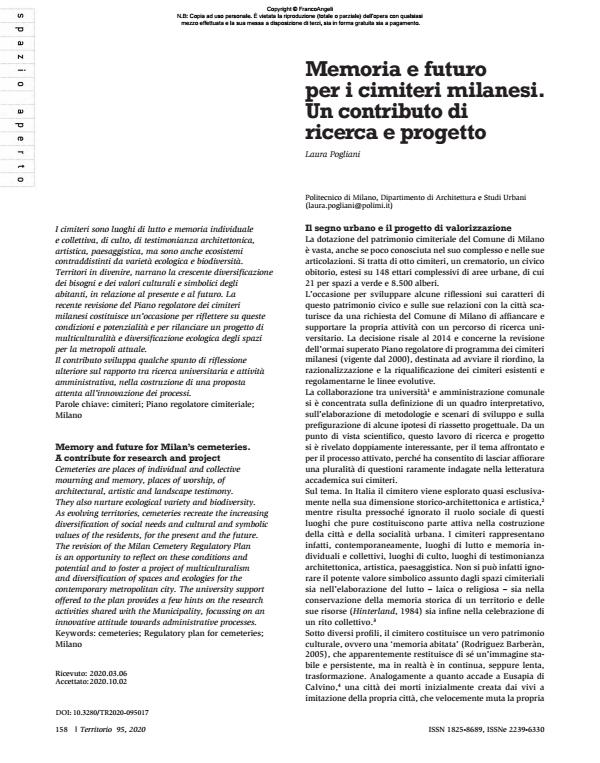Memory and future for Milan’s cemeteries. A contribute for research and project
Journal title TERRITORIO
Author/s Laura Pogliani
Publishing Year 2021 Issue 2020/95
Language Italian Pages 12 P. 158-169 File size 4776 KB
DOI 10.3280/TR2020-095017
DOI is like a bar code for intellectual property: to have more infomation
click here
Below, you can see the article first page
If you want to buy this article in PDF format, you can do it, following the instructions to buy download credits

FrancoAngeli is member of Publishers International Linking Association, Inc (PILA), a not-for-profit association which run the CrossRef service enabling links to and from online scholarly content.
Cemeteries are places of individual and collective mourning and memory, places of worship, of architectural, artistic and landscape testimony. They also nurture ecological variety and biodiversity. As evolving territories, cemeteries recreate the increasing diversification of social needs and cultural and symbolic values of the residents, for the present and the future. The revision of the Milan Cemetery Regulatory Plan is an opportunity to reflect on these conditions and potential and to foster a project of multiculturalism and diversification of spaces and ecologies for the contemporary metropolitan city. The university support offered to the plan provides a few hints on the research activities shared with the Municipality, focussing on an innovative attitude towards administrative processes.
Keywords: Cemeteries; Regulatory plan for cemeteries; Milano
Laura Pogliani, Memoria e futuro per i cimiteri milanesi. Un contributo di ricerca e progetto in "TERRITORIO" 95/2020, pp 158-169, DOI: 10.3280/TR2020-095017